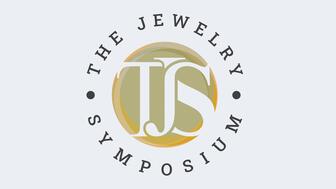The luxury goods company said founder Ippolita Rostagno will remain at the brand’s helm.
Squirrel Spotting: Having a Point of Differentiation
Peter Smith discusses how retailers can go about really setting themselves apart from the pack.

It’s hardly news to suggest that having a point of differentiation is critical in today’s challenging retail environment. What is less clear is what that means and how to get one.
I’m currently reading Brad Stone’s new book, “The Upstarts,” which deals with some of the most successful companies to have emerged from Silicon Valley in recent years. Companies such as Uber and Airbnb have become household names, disruptors and game-changers in just a few short years.
While I have no personal experience with Airbnb, I can’t imagine not grabbing my iPhone to summon a car on Uber, without having to worry about whether I have enough cash or if they take credit cards.
And, speaking of the iPhone, I watched a movie about Steve Jobs last week and I was reminded that the iPhone, a device that has become virtually indispensable to so many of us, was only introduced in 2007.
Facebook just started in 2004 and LinkedIn began in 2002. Starbucks, which seems to have a store on every block in some cities, really didn’t get going until it moved in California in the 1990s, and didn’t open its first store outside of the U.S. until 1996.
OK, quick digression ... have you ever seen the movie “Ferris Bueller’s Day Off”? There’s a great scene where the teacher asks his students a series of questions about tariffs, revenue curves and “voodoo” economics. He teases the class with each question as the camera pans the faces of the near-comatose students … Anyone? Anyone?
So, if phones, transportation, music, coffee and all manner of other “life stuff” has changed so dramatically in such a short few years, what do you think has happened during that same time period in our industry … Anyone? Anyone?
Even with the emergence of man-made diamonds, which accounted for about 1 percent of the category last year, a consumer would be hard-pressed to notice any meaningful differences between visiting a jewelry store in the 1980s and visiting one today. The experience, moreover, would likely reflect a variation on a very recognizable theme, with the case layouts, product offerings and general approach hardly changed from years past.
So, what can retailers do? They’re hardly in a position to invent an iPhone, replace the local taxi service or develop a social media platform.
But, Starbucks is a good model to draw from. They didn’t invent the coffee shop or come
Having a point of differentiation does not mean that you have something that no other retailer has. It does not mean that you need to reinvent the wheel, the iPhone or coffee shops. This misguided idea about what having a point of differentiation means has not served our industry well. It has resulted in far too many retailers resorting (by design or default) to meaningless platitudes such as “We’re all about the best service” or “We have the lowest prices in town.”
Having a point of differentiation means that you have a compelling story to tell about your business. It means that your story holds up to reasonable scrutiny across all aspects of your retail experience; from the store, your products/brands, your people and language, your marketing (traditional, digital, community activities, etc.) and everything else you do.
Once again, it doesn’t mean that you are the only retailer in town with brand X or Y, but that the way you deliver that experience, and present that brand, differs from what anyone else is doing.
It is not unusual to walk into a store and see a brand presented in a very uninspiring way. The lighting can be poor, the energy might be low, there might not be any music or scents/aromas used in the store, and the best-sellers from the brand may be out of stock.
Contrast that with finding the same brand in another store where it is featured in a great environment, with appropriate lighting and the best-sellers in stock, and where the customers are greeted by a friendly, engaged team, with the sound of great music and a wonderful aroma. Does that sound like the same experience?
Whatever your story, it must be authentic, and it must be relevant to your target audience. Be the bridal store with the biggest selection, but make it real. Be the bridal store with great quality, but make it real. Be the bridal store with low-low pricing, but make it real (and ... good luck with that one). Be the watch store, but make it real. Be the designer fashion store, but make it real. Or, be the antique/estate store, but make it real.
(Word of caution…if you try to be all things to all people, you’re in trouble.)
Having a point of differentiation means that your message is clearly visible across all your touchpoints and that you have created and sustained an experience around that story.
For example, if we look at the last (and perhaps least likely) option, an antique/estate store. The whole experience could be built around repurposing, sustainability and uniqueness. You could create an environment with framed photographs and quotes from a by-gone era. You could feature music from a given era (Sinatra anyone?) and even have a consultant visit with your team to suggest interesting clothing choices that would enhance the whole experience. You might provide snacks and/or beverages that might also fit the theme.
No matter what you choose, embrace the experience completely so that your people in your market don’t have to wonder about what your story is or question your relevance to them.
And finally, if you believe that you have a point of differentiation, test your theory. Gather everyone on your team and give them a blank piece of paper and five minutes to write down what your point of differentiation is. Have each person do that without discussing it with anyone else and look at the answers. I suspect that you will get answers that are all over the place.
“We provide the best service!”
Really?
“We’ve been in business for 100 years.”
Does that really matter?
“We have the best selection.”
If it’s the wrong stuff, who cares?
I suspect that two things will emerge from doing this simple exercise, as long as you honestly have people do it by themselves. One is that there will be no consensus, which is a problem, and the second is that you will find out you need to go back to the drawing board and figure out a relevant point of differentiation.
Retailers can make concerted choices as to what their story is and then go about executing that choice across all aspects and touch-points of the business. Not making a decision about your story is a choice in and of itself, and it has proven to be a very costly decision for many of the retailers who are no longer in business.
Peter Smith is president of Vibhor, a public speaker and author of “Sell Something” and “Hiring Squirrels.” He spent 30 years building sales teams in retail and wholesale and he can be contacted at Dublinsmith@yahoo.com, peter@vibhorgems.com, on LinkedIn, Facebook (Hiring Squirrels), or Twitter, @Hiring Squirrels.
The Latest

Laura Burdese, who joined the Italian luxury brand in 2022, will take on the role in July.

The National Jeweler editors revisit the most noteworthy industry happenings and design trends from 2025.

How Jewelers of America’s 20 Under 40 are leading to ensure a brighter future for the jewelry industry.

Need a gift for the cat lover who has everything? Look no further than our latest Piece of the Week.


It purchased the “Grosse Pièce,” an ultra-complicated Audemars Piguet pocket watch from the ‘20s, for a record-breaking price at Sotheby’s.

The lab-grown diamond grower now offers custom engagement and fashion jewelry through its Kira Custom Lab Jewelry service.

Roseco’s 704-page catalog showcases new lab-grown diamonds, findings, tools & more—available in print or interactive digital editions.

Chandler got his start at Michelson Jewelers and has served as DCA president and CEO since 2001. He will retire at the end of the month.

The boutique is slated to open this week inside Terminal 8, offering pre-owned Rolex watches and more to international travelers.

Sponsored by Digital Monitoring Products

The special-edition egg pendant ingested in a New Zealand jewelry store was recovered after a six-day wait.

Associate Editor Natalie Francisco plays favorites with Piece of the Week, selecting a standout piece of jewelry from each month of 2025.

The “Love and Desire” campaign is inspired by the magic that follows when one’s heart leads the way, said the brand.

Two awardees will receive free tuition for an educational course at the Swiss lab, with flights and lodging included.

Berta de Pablos-Barbier will replace Alexander Lacik at the start of January, two months earlier than expected.

Sotheby’s held its first two jewelry sales at the Breuer building last week, and they totaled nearly $44 million.

Winners will receive free registration and lodging for its fourth annual event in Detroit.

Here are six ideas for making more engaging content for Instagram Reels and TikTok, courtesy of Duvall O’Steen and Jen Cullen Williams.

The honorees include a notable jewelry brand, an industry veteran, and an independent retailer.

Carlos Jose Hernandez and Joshua Zuazo were sentenced to life without the possibility of parole in the 2024 murder of Hussein “Sam” Murray.

Yood will serve alongside Eduard Stefanescu, the sustainability manager for C.Hafner, a precious metals refiner in Germany.

Set in a Tiffany & Co. necklace, it sold for $4.2 million, the highest price and price per carat paid for a Paraíba tourmaline at auction.

The jeweler’s “Deep Freeze” display showcases its iconic jewelry designs frozen in a vintage icebox.

Take luxury gifting to new heights this holiday season with the jeweler’s showstopping 12-carat sphene ring.

This year's theme is “Unveiling the Depths of the Ocean.”

In its annual report, Pinterest noted an increase in searches for brooches, heirloom jewelry, and ‘80s luxury.


























